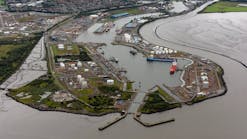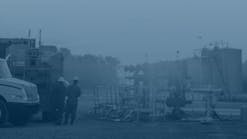A fresh look at the effects of vapor cloud explosions (VCEs) has resulted in a more accurate way of calculating the outcome of blasts at oil and gas plants.
This has implications for estimating potential losses at existing plants and keeping potential losses down in designs for new plants.
Richard Barton, assistant director of engineering services at Sedgwick Energy Ltd., London, said the standard method of calculating VCE effects involves an assessment of blast pressure from an equivalent amount of TNT.
An estimate of damage is then formed from the TNT blast overpressure profile as it decays from the explosion epicenter.
Sedgwick's new way of predicting VCE effects was formulated after a periodic state of the art review of VCE knowledge.
"We wanted to improve our estimations of maximum losses from plants," Barton said. "We found that industry thinking into VCE fundamentals has moved on significantly over the last 6-7 years through important research by organizations such as Shell, British Gas, and academic institutions."
INCREASED ACCURACY
Piecing the research jigsaw puzzle together, Sedgwick found a need for a new way to work out the effects of vapor blasts.
"The TNT model is based on a point source detonation," Barton said. "With a VCE it is the burning process that creates blast pressure. VCEs are fundamentally different from TNT blasts.
"A hydrocarbon release can result in formation of a vapor cloud that fills a plant. Subsequent ignition can take place some distance from the initial vapor release. Dispersion of the vapor cloud and individual plant layout can dramatically affect blast pressure/distance calculations."
The TNT model predicts the main blast damage occurs close to the event. Sedgwick's VCE model shows major damage can extend for considerable distances.
IMPLICATIONS
Barton said analysis of explosions has shown that the Sedgwick model is effective at predicting overpressure values at long distances from a blast epicenter, which the TNT model underestimates.
Sedgwick's main aim has been to improve accuracy of maximum loss estimates so insurance premiums and maximum claims can be judged more precisely.
But the new VCE methodology has implications for plant owners and designers. For a start, the new model shows gas processing plants generally have lower maximum loss values than refineries and petrochemical plants.
This could lower insurance limits required for LNG and LPG plants, for example. Plants which are poorly laid out and congested can suffer relatively high maximum losses and thus need higher insured limits.
Future plant designs also may be affected. The new methodology implies that maximum losses can be lowered by good plant layout.
"Over the last 20 years engineers have designed densely packed plants to keep energy losses down," Barton said. "Now it may become more advantageous to spread plants apart to minimize loss potential."


